Our dental services
Diagnostics

Due to regular dental check-ups, dental problems can be recognized and cured at an early stage.
Consultation and oral screening
Do not wait for your complaint to turn worse! As soon as you log in to our office, we will create a personalized treatment plan of charge after oral screening.
Search for focal infections
Focal infection is an asymptomatic, chronic inflammation at any part in the body, from which the various bacteria and toxins produced by the bacteria reaches other parts of the body by the blood and lymph circulation which can cause various pathological disorders . In which case do you have to suspect a focal infection? Arthralgia, spotted hair loss, skin rash, psoriasis, eczema, inflammation of the eye, allergic symptoms, fever of unknown origin. Teeth which can cause a focal infection are non-vital teeth, teeth with periodontal disease, impacted teeth, cysts of dental origin.
Intraoral X-ray
A periapical X-ray is a film made from one or two teeth. It is generally used during root canal treatments and for searching for focal infections.
Restorative dentistry
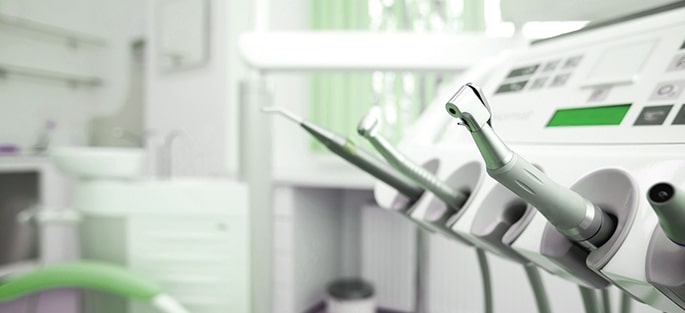
Restorative dental procedures includes treatments which try to preserve the teeth. These are root canal treatments, direct and indirect restorations, such as fillings, inlays, onlays and overlays.
Light-cured fillings
During these treatments we remove the decay from the teeth, and place an aesthetic light-cured filling material in the cavity and restore the original anatomy of the tooth.
Root canal treatment
If the decay reaches the pulp chamber of the tooth, a root canal treatment is necessary. During these procedure we remove the infected tissue from the tooth, and place a root filling into the root canal system. After the treatment we restore the tooth with a filling or a crown.
Indirect restorations
These restorations are fabricated outside of the mouth by a dental technician using the dental impressions of the prepared tooth. According to the size, thereare inlays, onlays and overlays. The finished restoration is cemented with a dental cement and restores the anatomy of the tooth completely.
Prosthodontics
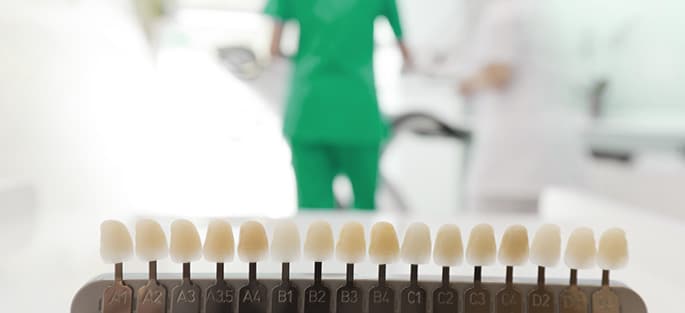
Thanks to nowadays modern techniques there are several methods to replace the missing teeth.
Porcelain fused to metal crowns
The porcelain fused to metal crowns are one of the most frequently used fixed prosthetic devices which are durable and do not change their colour in the mouth. During the procedure we prepare the teeth, take impressions, and then fix the crown with dental cement. The crown is fabricated by the dental technician.
Zirconia crowns
Zirconia is a very hard ceramic, that is used as a strong base material in full ceramic crowns. It is a highly aesthetic and long-lasting restoration. It may be an alternative to those who have metal allergies.
Emax crowns
Emax is an all-ceramic system that is long lasting and highly aesthetic. The Emax system is mainly indicated for fabrication of crowns and veneers in the front region.
Veneers (E.max)
Porcelain veneers are mainly used in the field of front teeth, for the correction of aesthetic defects. On the outer surface of the teeth, we place a thin plate of “high strength” porcelain to create an even, regular, aesthetic smile.
Full / partial acrylate denture, removable
The most commonly used treatment for eliminating the total toothless condition is the acrylate base removable denture held by the anatomical formulas of the mouth.
A partial acrylic base plate removable denture is prepared when the patient no longer has enough tooth, so no fixed prosthesis (crown / bridge) can be made. The part of the removable prosthesis directly in contact with the mucous membrane is made of acrylate, which is fixed with wires with the existing teeth.
Partial denture, removable
Also called elastic denture. The material is plastic and does not break when dropping. The clips for fixation are made of Valplast and are therefore flexible and aesthetic. The disadvantage is that it can not be repaired.
Partial metal plate prosthesis, removable
The connecting parts are made of metal, the anchorage (stabilization) is made with metal clips and slide systems.
Oral surgery
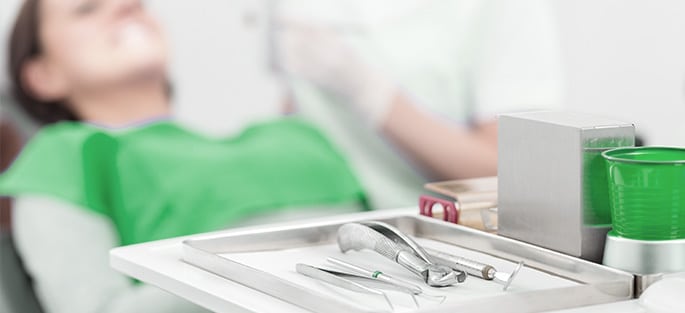
Our oral surgery treatments include tooth extractions, surgical removal of wisdom teeth and apicoectomies.
Extraction
We have to remove the teeth if the structure of the tooth is damaged so badly that it can not be restored anymore. We treat the problem fast and painless, by using local anaesthetics.
Surgical extraction
In those cases when we cannot remove the teeth simply by using forceps and elevators we have to make a surgical extraction. We raise a flap from the gum tissue around the tooth, so we can reach the surrounding bone structure. After that, we remove the sufficient amount of bone by using a special surgical drill. Now we can easily reach and remove the remained root or tooth. The procedure is completely painless by using local anaesthetics.
Surgical removal of wisdom tooth
If the wisdom tooth causes complaints to the patient, we have to remove them. The procedure is completely painless, by using local anaesthetics. If the position of the tooth is not suitable for simple removal, we use a surgical extraction. After the procedure, we place sutures in the wound, which will be removed after one week.
Apicoectomy
After root canal treatments in some cases the healing is not complete, inflammatory tissue remains around the tip of the root. We can correct these lesions in a surgical way.
We cut the gum tissue above the root tip, make access with a surgical drill to the area, and remove the inflammatory tissues and also the root tip. The procedure is completely painless by using local anaesthetics. We place sutures in the wound, which will be removed after one week.
Closing of Oro-Antral communications
An Oro-Antral communication is a possible complication of upper teeth extraction..In this case a connection occurs between the oral cavity and the maxillary sinus, which needs to be closed with a flap in order to prevent chronic infections of the sinus.
Periodontology
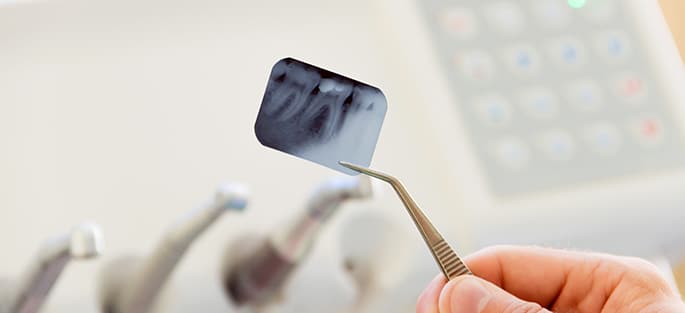
By removing the calculus frequently, we can cure, or prevent periodontal diseases.
Sonic scaling and polishing
This is a professional technique, which removes discolorations and the hardened dental plaque, also called calculus or tartar, which cannot be removed by simply brushing the teeth.
Periodontal curettage
During periodontal disease, a so-called periodontal pocket forms along the surface of the root, which leads to the loss of bone around the tooth structure, which causes the loosening of the tooth. With periodontal curettage we eliminate these pockets in a surgical way.
Night guard
Night guard is a typical treatment method for those who have a history of grinding their teeth (also called bruxism) while they sleep. This problem may lead to chronic pain in the temporomandibular joint, broken, cracked or chipped teeth. The night guard is device made from plastic, which covers the teeth and prevents the consequences of the grinding.
Pediatric dentistry
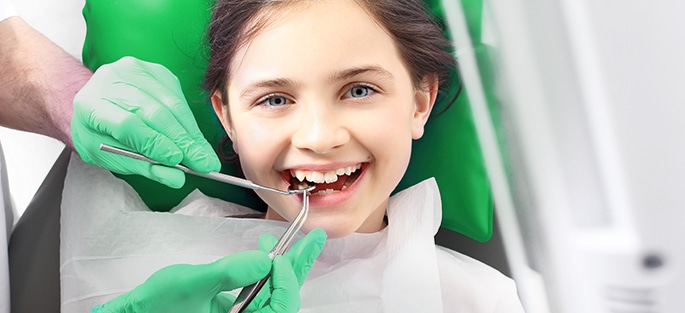
Regular dental check-ups for children are more important than we would think as parents, because the dental health of our children, may affect the later development of the whole body. It is important to meet with the dental staff at an early age, and get familiar with the dental equipments and environment.
Filling
Pulpotomy
Extraction
Phone
+36 20 417 4626
Opening hours
Monday – Friday
9:00 – 16:00
Dental office
30. Piac street 1/2
Debrecen

